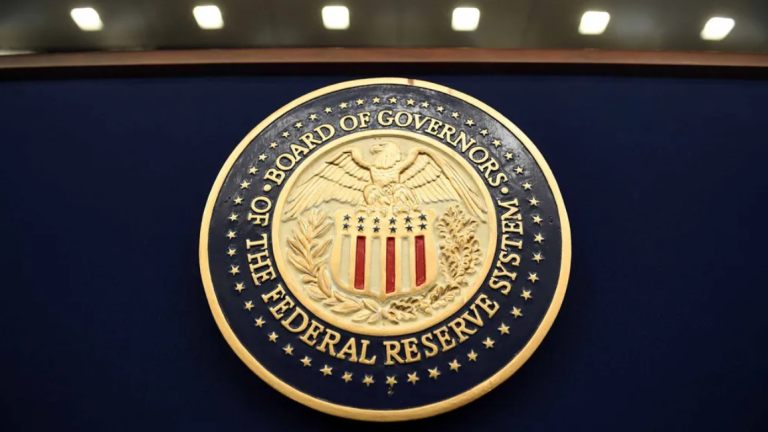In the world of finance, few events have the power to sway the stock market like the words of the Federal Reserve Chair. Jerome Powell’s recent statements have set stocks on a roller-coaster ride. This article delves into the impact of Powell’s remarks and the subsequent market turbulence, offering insights into the factors at play.
Powell’s Press Conference
The catalyst for the stock market’s wild ride was Federal Reserve Chair Jerome Powell’s press conference, where he shared the central bank’s outlook on the economy and provided hints about future monetary policy. Powell is known for his careful choice of words, as even subtle shifts in his tone can trigger market reactions.
Key Takeaways from Powell’s Remarks
Interest Rates: Powell hinted at the likelihood of a rate hike in the near future. Higher interest rates can make borrowing more expensive, affecting businesses and consumer spending.
Tapering: The Federal Reserve has been purchasing assets to support the economy, a program known as quantitative easing. Powell suggested that the tapering of these asset purchases may begin soon, a sign that the central bank is considering withdrawing its monetary support.
Inflation: Powell acknowledged that inflation remains a concern but stated that it is a complex issue, and the Fed will closely monitor it.
Market Reaction
The stock market’s reaction to Powell’s comments was swift and dramatic. In the immediate aftermath of his press conference, major stock indices experienced significant swings, with the Dow Jones Industrial Average, the S&P 500, and the Nasdaq all exhibiting pronounced volatility.
The Fear of Rising Rates
One of the primary factors contributing to the market’s unease was the prospect of rising interest rates. The expectation of higher rates can put pressure on equity markets, as it can lead to higher borrowing costs for businesses, potentially slowing economic growth.
Investors have become accustomed to low-interest rates as a supportive factor for the stock market. A shift away from these historically low rates can create uncertainty, prompting investors to reevaluate their portfolios and risk exposure.
The Tapering Dilemma
Powell’s suggestion of tapering the Federal Reserve’s asset purchases added another layer of complexity to the market’s reaction. The central bank has been actively buying Treasury bonds and mortgage-backed securities to maintain liquidity and stabilize the financial system since the beginning of the COVID-19 pandemic.
Tapering, or reducing these asset purchases, indicates a potential step toward normalizing monetary policy. While this is a positive sign for economic recovery, it can also introduce uncertainty into financial markets. Investors are closely monitoring the pace and timing of the tapering process.
Inflation Concerns Persist
Powell’s acknowledgment of the ongoing inflation concerns added fuel to the market roller-coaster. Inflation has been a hot topic, with rising consumer prices causing unease among investors and consumers alike.
The central bank’s role in managing inflation is a delicate balancing act. While some inflation is considered healthy for a growing economy, excessive inflation can erode the purchasing power of consumers and disrupt economic stability. The Fed’s commitment to monitoring and addressing inflation concerns has implications for monetary policy and market sentiment.
Investor Strategies Amid Uncertainty
In times of market uncertainty, investors often revisit their strategies. Here are some considerations for navigating the Powell-driven market turbulence:
Diversification: Maintaining a diversified portfolio can help mitigate risk. Spread your investments across various asset classes, such as stocks, bonds, and alternative investments.
Risk Assessment: Reevaluate your risk tolerance in light of changing market conditions. Consider whether your portfolio aligns with your financial goals and risk preferences.
Long-Term Perspective: Market volatility is common, but it’s crucial to maintain a long-term perspective. Short-term fluctuations may not necessarily impact your long-term financial objectives.
Expert Advice: Seeking guidance from financial advisors who are well-versed in navigating market volatility can provide valuable insights and strategies.
Economic Fundamentals: Stay informed about economic indicators, fiscal policies, and central bank actions. A deeper understanding of these factors can help you make informed investment decisions.
Jerome Powell’s press conference sent the stock market on a roller-coaster ride, highlighting the significant influence of the Federal Reserve Chair on market sentiment. Rising interest rates, tapering of asset purchases, and ongoing inflation concerns are factors contributing to market uncertainty.
Investors are advised to remain vigilant, reevaluate their portfolios, and consider strategies that align with their risk tolerance and financial goals. While market turbulence is a reality, a well-considered investment approach can help weather the storm and navigate the complex dynamics of today’s financial landscape.



























